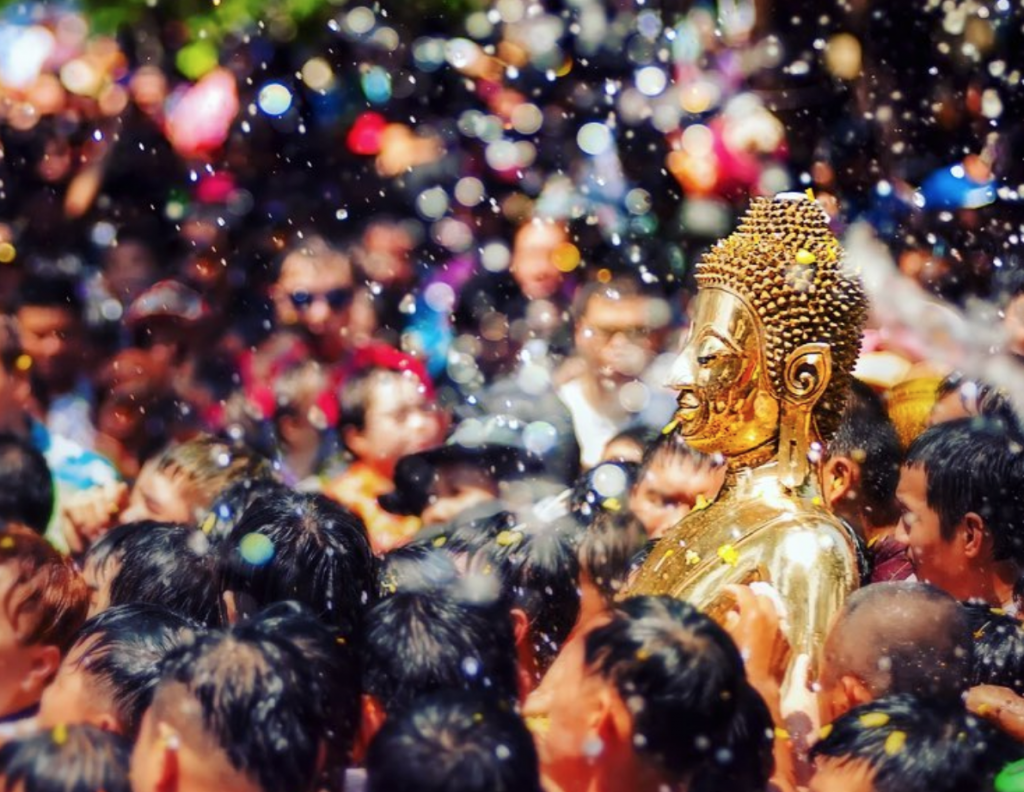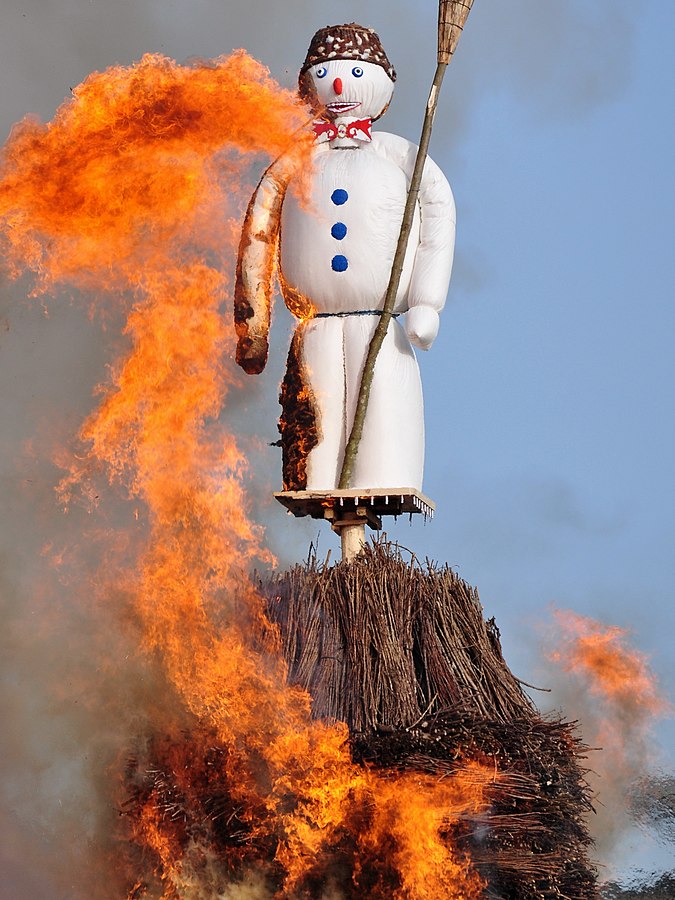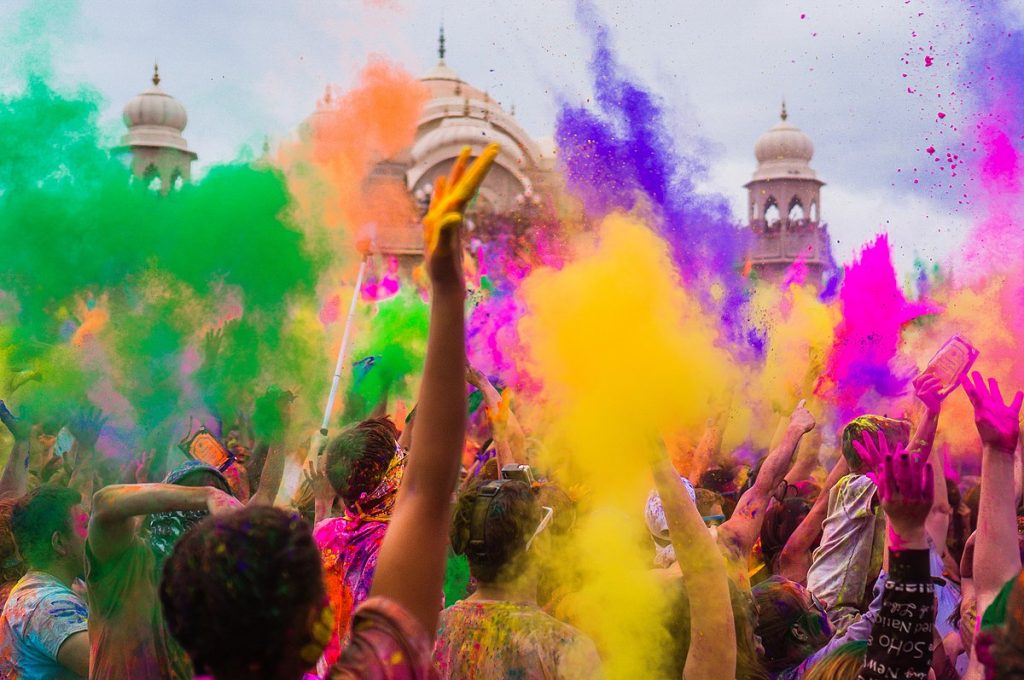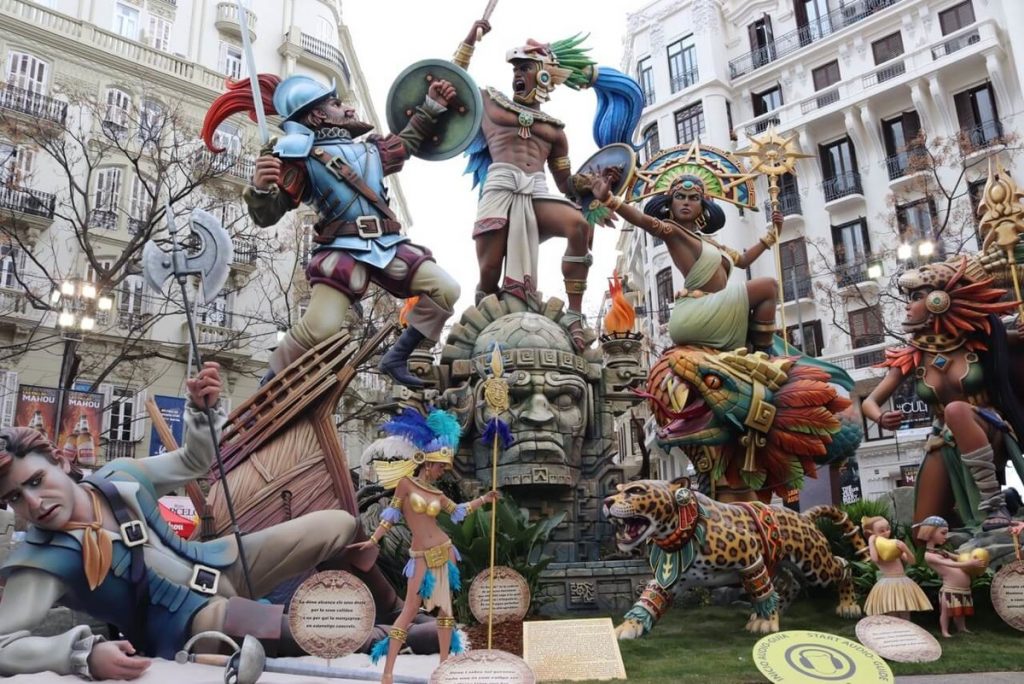May Queen
The idea of May Day celebrations has been around since the medieval period. 1 May would see days of feasting and dancing taking place in towns and villages.
The first of May is celebrated throughout Europe, and in the UK it is celebrated by crowning a May Queen.
The May Queen was chosen from the normal girls who lived in the town or village. This was to show how everything was ‘topsy-turvy’ on May Day. The May Queen tradition was particularly popular during the Victorian and Edwardian eras. It has continued in various pockets of the UK. The longest unbroken run of May Queen’s being crowned is from Hayfield in Derbyshire.
The May Queen wears white and takes part in the parades that take place on the day.
May Day bank holiday is also International Workers Day. It sits about halfway between the spring equinox and the summer solstice.
When is May Day?
In 2025 the May Day bank holiday took place on 5 May. In 2026 it will take place on 4 May.
Buergbrennen

Tristan Schmurr via Wikicommons CC BY-SA-2.0
Buergbrennen is a popular spring holiday in Luxembourg, Germany, France and Belgium. In Germany, these celebrations are called ‘Burgbrennen’ and in France and Belgium they are called ‘Dimanche des Brandons’. The celebrations see people light huge bonfires to mark the end of winter and the beginning of spring.
The holiday is dying out in Germany, Belgium and France, but in Luxembourg it is thriving, after a revival in the 1930s.
Over time the bonfires have developed too, with them now including a cross-like centrepiece.
Originally this holiday was only for married men, with the newly married men taking on special roles in the ceremony. These days it’s for everyone, with torchlit processions.
Lighting a bonfire at the change of the seasons represents saying goodbye to the past and cleansing the air for the future.
When is Buergbrennen?
Buergbrennen takes place on the first Sunday of Lent. In 2025 this was 9 March and in 2026 this will be 22 February.
Nowruz
Nowruz is the Iranian New Year, according to the Iranian solar Hijri calendar. It falls on or around 21 March.
Its origins are found in the Iranian religion of Zoroastrianism. These days it is mostly secular, although still celebrated as a holy day for Zoroastrians, some Muslim communities and Baháʼí.
The first day of the Iranian calendar falls on the March equinox, and so the New Year is intrinsically linked with the beginning of spring.
Traditional Nowruz customs include dances, the exchanging of gifts and fire and water rituals. People partake in big spring cleans before Nowruz.
When is Nowruz?
In 2025 and 2026 Nowruz takes place on Monday 20 March.
Songkran

blog.takemetour.com via Wikicommons CC BY-SA-4.0
Songkran is the traditional Thai New Year. It takes place on 13 April every year, but the holiday period runs from 14 through to 15 April.
Until 1888 Songkran was the official beginning of the New Year in Thailand, before changing to 1 April until 1940 when it became 1 January.
Songkran means to ‘to move’ or ‘movement’. It comes from the Sanskrit word ‘saṃkrānti’ which means ‘astrological passage’. It refers to the sun moving from one position to another in the zodiac.
There is a focus on cleansing throughout the festival. People take part in water fights or clean their houses, washing away the sins or trespasses of the previous year. They also visit local temples and offer food to Buddhist monks.
The tradition of throwing water over each other throughout the festival means it is also known as the water festival.
On the first day of Songkran, there are processions of images of Buddha and the water fights begin.
The second day sees people spend quality time with their families.
The third day is the official start of the New Year, with parties and celebrations.
When is Songkran?
Songkran always takes place on 13 April.
Sechseläuten

Roland zh via Wikicommons CC BY-SA-3.0
Sechseläuten is a spring holiday that takes place in Zurich, Switzerland. Its name refers to the six o’clock ringing of the bells.
The holiday began as a celebration of the first working day of summer hours. In the winter workers would work until they ran out of daylight, but in the summer they would work until the bells rang at six o clock. Reaching the time of the year when people had non-working daylight hours was a cause for celebration, hence Sechseläuten!
There is a procession of guilds, and a huge effigy is burnt. The effigy is in the form of Böögg, a figure of a snowman that is full of explosives. The Böögg figure is older than the Sechseläuten festival and comes from the idea of a masked figure or ‘bogeyman’. If the Bööggs head takes a short time to explode it means that there will be a warm and sunny summer.
It takes place on the third Monday of April. Sechseläuten is seen as an upper-class holiday, and its proximity to the working-class holiday of May Day has in the past caused some trouble. In 2006 the Böögg was abducted by leftist ‘revolutionaries’ and since then reserve Bööggs have been created and even stored in bank vaults.
When is Sechseläuten?
In 2025 Sechseläuten took place on 28 April and in 2026 it will take place on 20 April.
Sham El-Nessim
Sham El-Nessim is the Egyptian national festival marking the beginning of spring. It originates from the ancient Egyptian Shemu festival.
Shemu was a springtime festival which marked the beginning of spring and the abundance of crops that come with it.
It always falls on Easter Monday according to the Coptic Orthodox Church. People celebrate by spending time in green spaces or around nature. Boiled eggs are coloured and then eaten or given as gifts.
Traditional foods eaten on Sham El-Nessim include lettuce, green onions, lupin beans or fesikh, which is a fermented fish.
When is Shem El-Nessim?
In 2025 Shem El-Nessim took place on Monday 21 April and in 2026 it will take place on 13 April.
Holi

Steven Gerner via Wikicommons CC BY-SA-2.0
Holi is the Hindu festival of colours that marks the end of winter. It also celebrates the coming of spring and love. Crowds throw coloured powder, or gulal, at each other. They also use water pistols and balloons to make the powder stick.
Each of the colours of the powder has a special meaning. Blue represents the god Krishna, red is for love, and yellow is associated both with turmeric and with healing.
On the day before Holi, known as Holika Dahan, people light bonfires, pray and dance. The bonfire is thought to purify the air.
When is Holi?
The date of Holi changes every year as it is based on the lunar calendar.
In 2025 it was on 14 March and in 2026 it will be on 4 March.
Las Fallas

Pericles Rosa via Wikicommons CC BY-SA-2.0
Las Fallas is held in Valencia, Spain, between 15 and 19 March, although celebrations take place every day from 1 to 19 March.
It involves the creation of ‘Fallas’ huge monuments which are burnt. There are fireworks and firecrackers throughout the festival.
The festival possibly comes from the tradition of carpenters burning the pieces of wood which propped up their lights. Once the days got lighter in springtime these were no longer needed and would be burnt. As other objects were thrown on the fire, the wood began to take on a human-like shape.
As well as celebrating the warmer months, the festival also celebrates Valendia’s long tradition of silk costumes.
The giant falla around the city are usually a satire on current social or cultural issues, including caricatures.
Throughout the year neighbourhood groups host fundraiser parties and dinners to raise money for the festival. During the days of celebration, there are brass bands, parades, and models and monuments being burnt and exploded at random times.
When is Las Fallas?
Las Fallas always takes place from 1 March – 19 March


